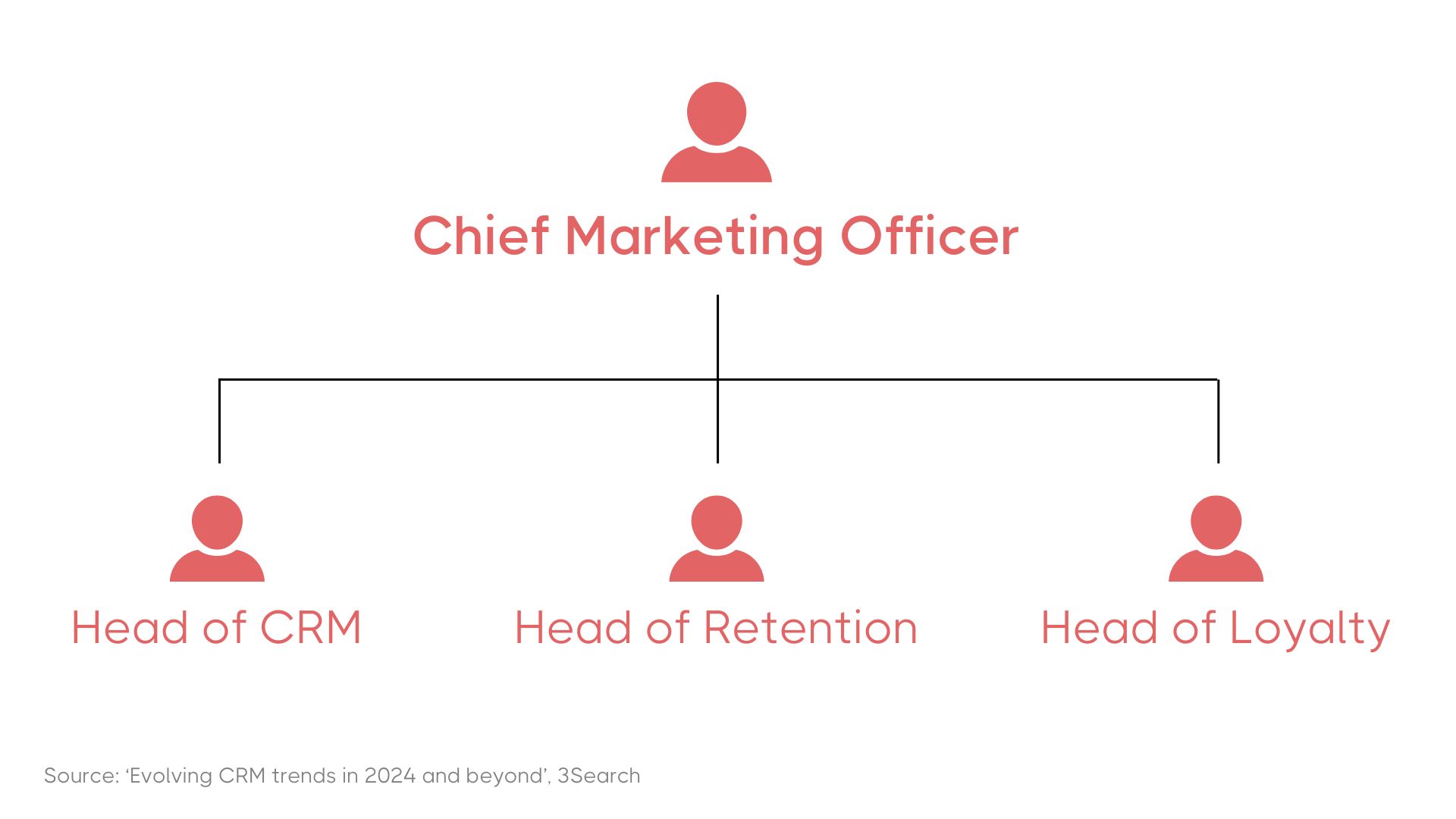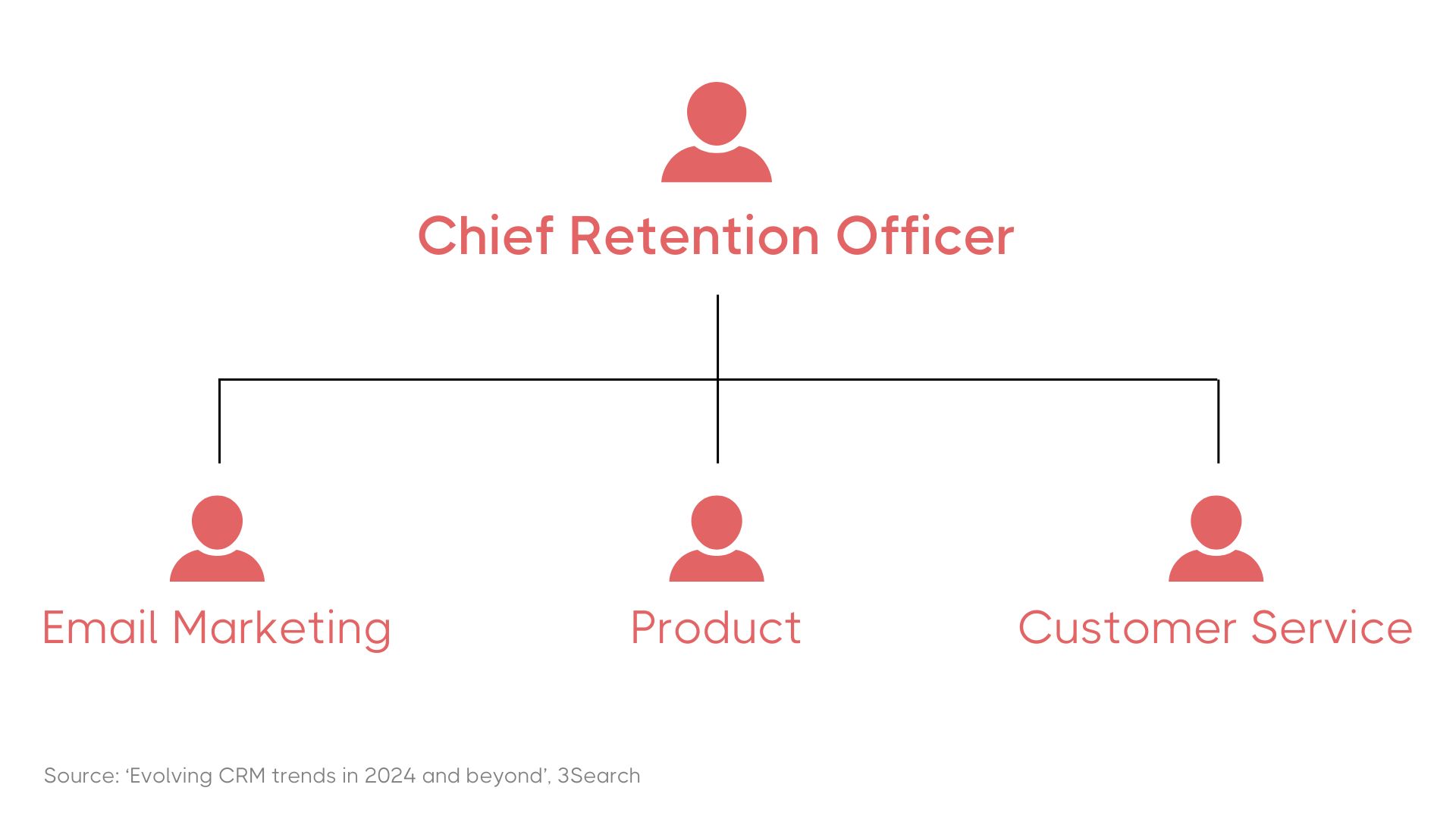Upload Your CV
Send us your CV and a member of the team will be in touch to discuss open opportunities with you.
This article explores some of the leading CRM Marketers' reflections on the industry in ...

This article explores some of the leading CRM Marketers' reflections on the industry in 2024 as well as their predictions for the following year. An excellent resource for those planning their digital marketing strategies for 2025.
On 21st November, 2024, Fabio Can Alesi hosted a roundtable discussion for Customer Relationship Management (CRM) Leaders to discuss the trends they’ve seen over the last 12 months. Together, they discussed:
We've put together the key takeaways from the morning’s discussion in this article, so keep reading to find out more.
The biggest trend that our consultants have noticed over the past year is the shift in investment from customer acquisition to retention. Fabio kicked off the morning’s conversation by asking attendees for their thoughts on the shift.
There were three core benefits raised to investing in your customer retention strategy:
The rise in popularity for customer retention is largely due to the current economic environment. Consumers have less money to spend, so it’s incredibly important to maintain your existing customer base.
“People aren’t spending, so acquiring new customers is even harder – hold on to what you can.”
However, the approach largely depends on business size and industry, with some CRM Leaders saying they’re yet to see the shift.
While smaller businesses tend to be slower to invest in retention, in an economic downturn there is a clear need for them to do so.
It's a difficult market for investment and retention marketing offers a reliable pathway to long-term profitability. As a result, it is often something investors look for in business’ marketing strategies. Small businesses looking for fundraising must prove that their customer lifetime value (CLV) is being maximised.
This does require a shift from their usual approach to digital marketing. The CRM Leaders in the room shared they find “Most companies out there don’t have a CRM strategy.” Often, smaller brands will spend all their budget on acquisition and quickly find they have no way to retain those customers.
Despite the clear benefits to retention, it’s difficult to secure investment for campaigns. One of the key challenges highlighted was the difficulty in communicating the strategic value of retention to businesses. Unlike acquisition, which delivers immediate, measurable results, retention requires a longer-term investment with less tangible, short-term outcomes.
Retention's slower ROI can be particularly problematic in businesses accustomed to the "quick wins" of acquisition campaigns. This doesn’t make the CRM industry less valuable, however, it is a critical driver of sustainable growth.
Educating stakeholders about the value of CRM tools and teams is essential for long-term profitability. There were a few strategies suggested to achieve this:
Loyalty schemes have exploded over the past 5 years, with every business exploring the concept. But is this trend the future of customer retention marketing? The CRM Leaders in the room noted a changing role of loyalty programs in strategies and the challenges they bring.
With so many brands investing in loyalty schemes, there was certainly a rush for marketing teams to deliver their own. Several CRM Leaders shared experiences of being rushed to launch loyalty schemes without clear strategies. This led to poor execution and limited impact.
One participant described a "loyalty boomerang" effect, where companies repeatedly attempt to introduce programs, only to abandon them due to poor planning and lack of measurable success. These schemes often fail to engage customers meaningfully, especially when they offer rewards that don't align with customer interests or lack a clear value proposition.
Where strategies are in place, it’s important that they evolve with their customer base. As new generations begin to interact with your brand, it’s important to be aware they have different needs and expectations.
For example, younger customers tend to value instant gratification, such as immediate discounts or perks upon sign-up. Whereas older customers often prefer traditional, transactional models like points collection for larger rewards. Brands must balance these unique customer preferences to design programs that cater to all.
Finally, with so many loyalty programs available, there is a question around how much loyalty is actually encouraged. Customers are mostly happy to sign up to every loyalty scheme available to receive the benefits on offer. To overcome this, loyalty programs must go beyond transactional incentives and instead foster deeper emotional connections with customers.
The CRM Leaders shared that the best loyalty schemes leverage online communities to build brand affinity or use gamification to encourage repeat purchases. It's also important to align loyalty programs with broader CRM strategies to ensure consistency across customer interactions.
As the CRM industry evolves, the job titles and team structure must evolve with it. The Leaders moved on to discuss how they would like to see CRM recruitment change to accommodate the future of the profession.
Over the past 12 months, the recruitment market has been challenging to navigate when it comes job titles. We've seen an increase in job title inflation, making recruitment even more difficult to navigate. This is certainly true for the ‘CRM Specialist’ role.
While the Specialist title suggests a high degree of expertise, one attendee noted that it often refers to generalist, junior talent. The title masks broad or ambiguous responsibilities. ‘Specialists’ are expected to take on a range of roles, from lifecycle management to customer support to CRM technology integration. Despite the title suggesting otherwise, this is another generalist role.
As a result, the CRM Leaders called for more specialisation in teams to allow for more optimised CRM strategies.
A hotly debated topic of the morning was around how teams should be structured to support customer retention.
In more structured setups, companies are carving out distinct leadership roles, such as Head of CRM, Head of Retention, and Head of Loyalty. These dedicated positions help ensure that each aspect of customer relationship management gets the focus it deserves.

However, this is not the norm. Most Retention roles sit at mid-level and so aren’t able to make significant impact.
"We’re seeing more roles in retention, but they tend to be at the mid-level rather than senior or strategic."
One attendee suggested the creation of a Chief Retention Officer role. Anyone who was involved with the customer journey – from customer service to product – would sit under this role.

They argued that as a business-wide issue, retention must have a seat at the board to align everyone towards this goal.
“Retention is a company-wide goal.”
We want to extend a big thank you to our CRM community for joining us in this discussion. From the increasing emphasis on retention to the challenges of loyalty program execution and the shifting dynamics of CRM roles, it’s clear that the industry is in a state of transformation.
If you’re interested in finding out more about the future of customer retention marketing, don’t hesitate to get in touch with our expert recruiters.